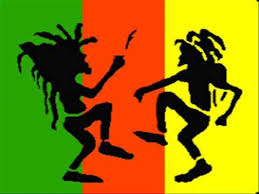13.21 Reggaeton. Musical genre popularized in Cuba in the 20th century (2000-2011).

To highlight the origin of the Reggaeton musical genre in the late 20th century, two versions are worth mentioning: the first addresses its emergence in Panama, while the other asserts that it originated in Puerto Rico. It’s important to note that the latter is where most of the singers of this genre originate.
Reggaeton derives from Jamaican reggae, but also draws influences from diverse genres such as American hip-hop and various Latin rhythms. The unique characteristics of this musical style are reflected in its lyrics, which are sung in Spanish.
This musical genre essentially features a repetitive rhythm and bass lines. This rhythm is roughly identical in all of its songs, sometimes giving the impression that, even when listening to uneven songs, you’re constantly listening to the same one. It has a characteristic timing, which governs most of its songs.
Another distinctive feature of reggaeton is its thunderous vocals, distorted with electronic equipment, creating a soft echo that gives more power to each articulated word. The singer’s voice is just as important as the work of the disc jockey or DJ, who is in charge of mixing the music. The key to a song’s success depends on the harmony between the two.
Reggaeton lyrics are generally not very elaborate; they rely on rhyme to make the song catchy and memorable, thus becoming distinctive to the audience. The vocabulary used is replete with popular idioms and phrases.
One of the main themes addressed in the songs is sex. This theme is sometimes discreetly presented, but at other times, the lyrics are sexually explicit. Some of the lyrics are considered simple and sexist, even insulting the integrity of the female gender. However, not all of them are controversial topics; several songs also feature themes of love and sentiment.
Reggaeton began to gain popularity among younger segments of society and spread to several Latin American countries, even reaching the North American market. This exaggerated evolution, which occurred between the late 20th and early 21st centuries, gave the rhythm a perspective that was unexpected, as it was initially considered a shadowy genre.
It is currently considered a successful musical genre in several countries, including Venezuela, Colombia, Mexico, Argentina, Spain, the Dominican Republic, the United States, Puerto Rico, and Cuba.








